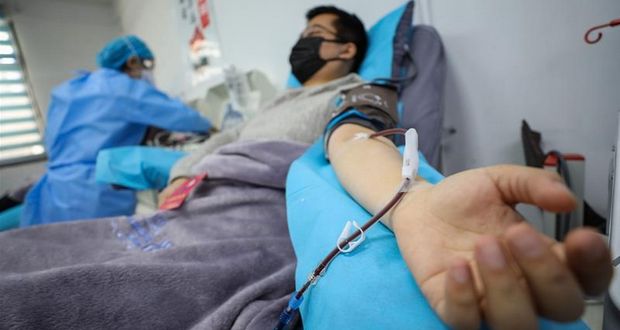1Wuhan Institute of Virology

Wuhan which became the first epicenter of the COVID-19 outbreak also has a Research Institute of Virology. Immediately after the news of coronavirus outbreak, the Institute was rumored to be a bioweapon research laboratory and there were concerns worldwide that it was the source of the outbreak through accidental leakage, which it publicly refuted. Though virus experts have observed that “the mutations [in the virus] are completely consistent with natural evolution,”(ruling out bioweapon attack) they agree that a laboratory accident cannot be ruled out completely.
2Contagion

Researchers found that 80% of COVID-19 cases spread from people who don’t know they are sick. Research has also found that infected patients are contagious 2 days before symptoms show.
3Symptoms

People infected by COVID-19 may either be asymptomatic or develop flu-like symptoms such as fever, cough, fatigue, shortness of breath, or muscle pain. CDC lists emergency symptoms including difficulty breathing, persistent chest pain or pressure, sudden confusion, difficulty waking, and bluish face or lips. Immediate medical attention is advised if these symptoms are present.
4Incubation Period

The usual incubation period (the time between infection and symptom onset) ranges from one to fourteen days. It is most commonly five days. In one recorded case, however, it had an incubation period of 27 days.
5Method of Spread

The coronavirus (COVID-19) seems to mostly spread between people via respiratory droplets. It may also be spread from touching contaminated surfaces and then touching one's face. Researchers have discovered that coronavirus can live up to 72 hours on certain materials such as stainless steel, up to 3 hours in the air and it can likely live up to 96 hours on phone screens.
6ACE2 Receptor

The Novel Coronavirus-19 uses the ACE2 receptor for entry into target cells. It is a receptor involved in regulating blood pressure. ACE2 receptor is not expressed as prominently in young children as in adults, which makes it tougher for the spikes on the tiny viral particles to bind and gain entry to the cells so that the virus can replicate.
7Transmission Stages

Researchers have classified different stages of the spread of Coronavirus as thus:
Stage 1 - Imported Cases: These are those who have traveled to virus-hit foreign countries and have come back to the USA.
Stage 2 - Local Transmission: These are those cases who have come in contact with patients who have a foreign travel history.
Stage 3 - Community Transmission: Community transmission is when a patient not exposed to any infected person or one who has traveled to any of the affected countries tests positive. Large areas get affected when community transmission takes place.
Stage 4 - Epidemic: This is the last and the worst stage where the disease takes the shape of an epidemic with no clear endpoint like it did in China.
Latest FactRepublic Video:
15 Most Controversial & Costly Blunders in History
8At-Risk Age Group

The risk of serious disease and death is higher in older age groups with coronavirus infections. But they aren't the only age groups at risk. An analysis of cases in the U.S. found that 45% of hospitalizations, 53% of intensive care admissions and 80% of deaths were among people 65 and older. The highest percentage of deaths associated with COVID-19 was among people 85 and older.
9Prevention

Strategies for preventing transmission of COVID-19 include overall good personal hygiene, hand washing, avoiding touching the eyes, nose or mouth with unwashed hands, coughing/sneezing into a tissue and putting the tissue directly into a dustbin. Those who may already have the infection have been advised to wear surgical masks in public. Social distancing measures are also recommended to prevent transmission. However, some misconceptions like rinsing the nose and gargling with mouthwash are not effective.
10Social Distancing

To stop the spread of coronavirus, officials have instructed the public to practice social distancing -- staying home, avoiding crowds and refraining from touching one another. This may go on probably for several months, but we may have to do it over and over again since the outbreak could come in waves. Research by the Imperial College in Great Britain “would suggest you have to institute these kinds of measures for five months, very vigorously … maybe even longer until we have a vaccine,” according to an infectious disease specialist.




